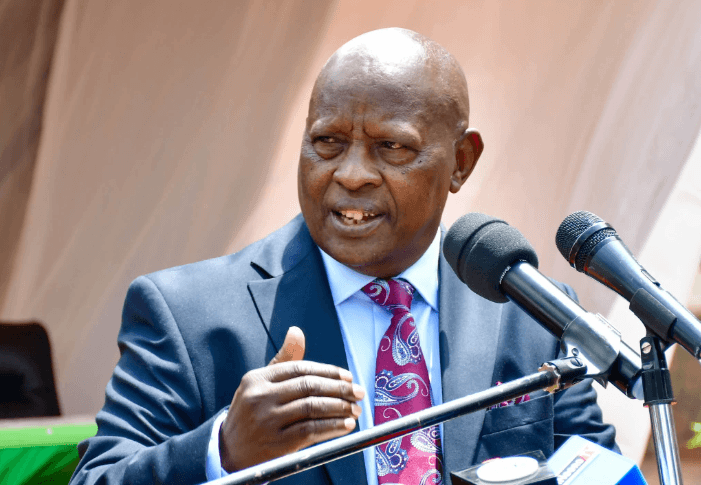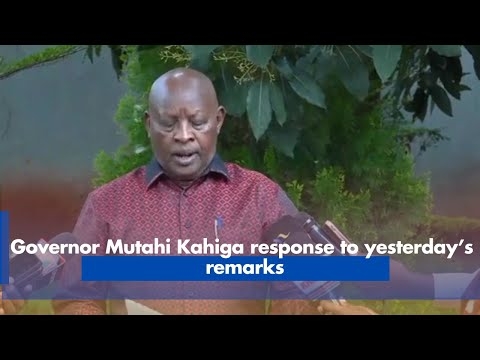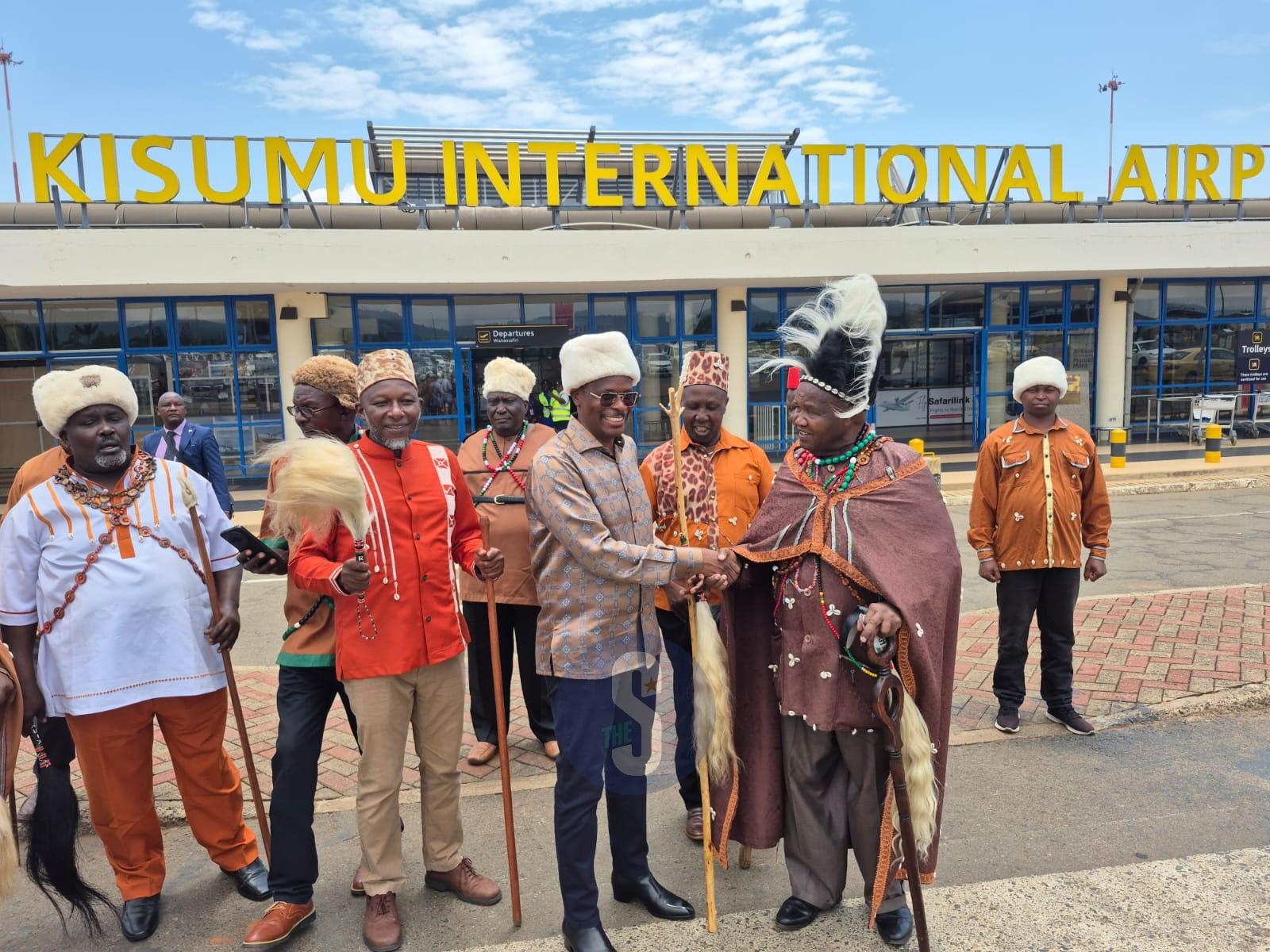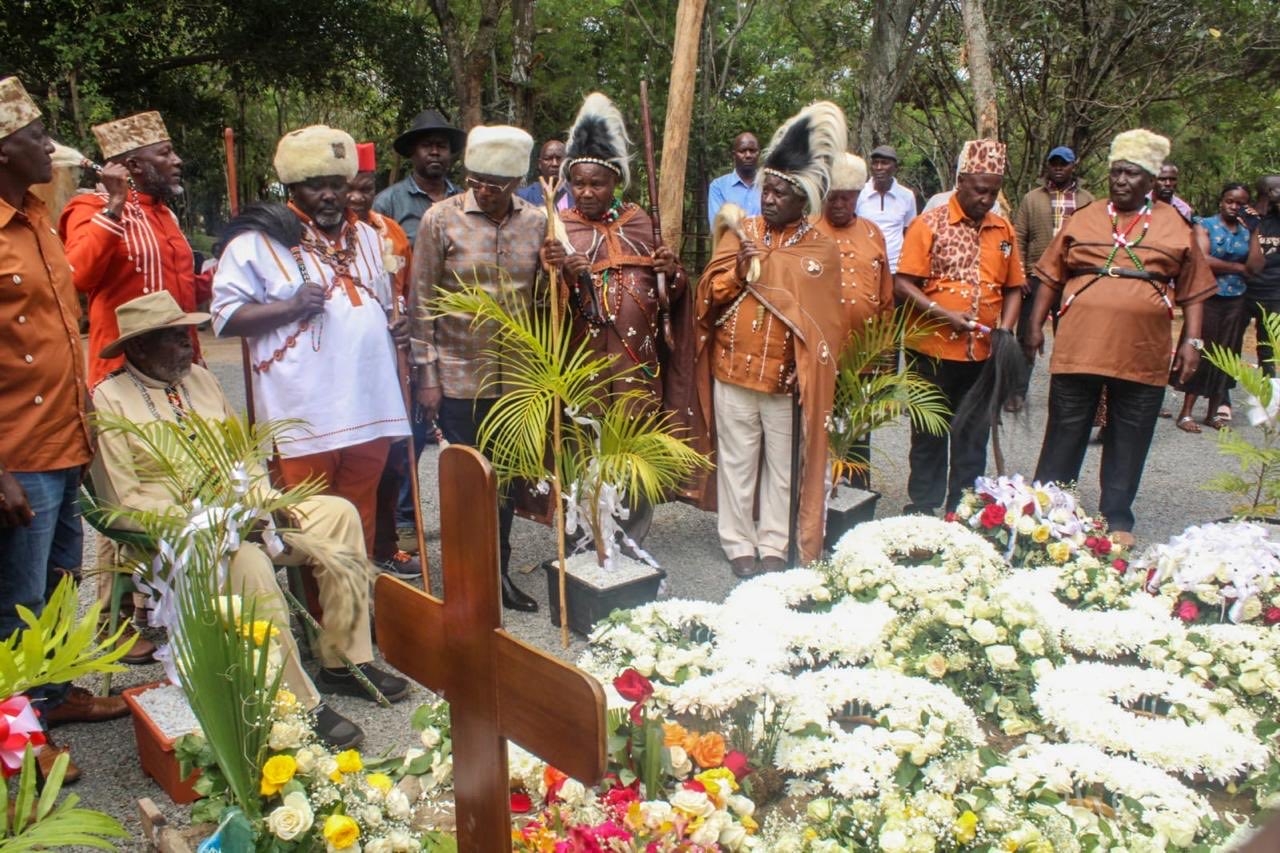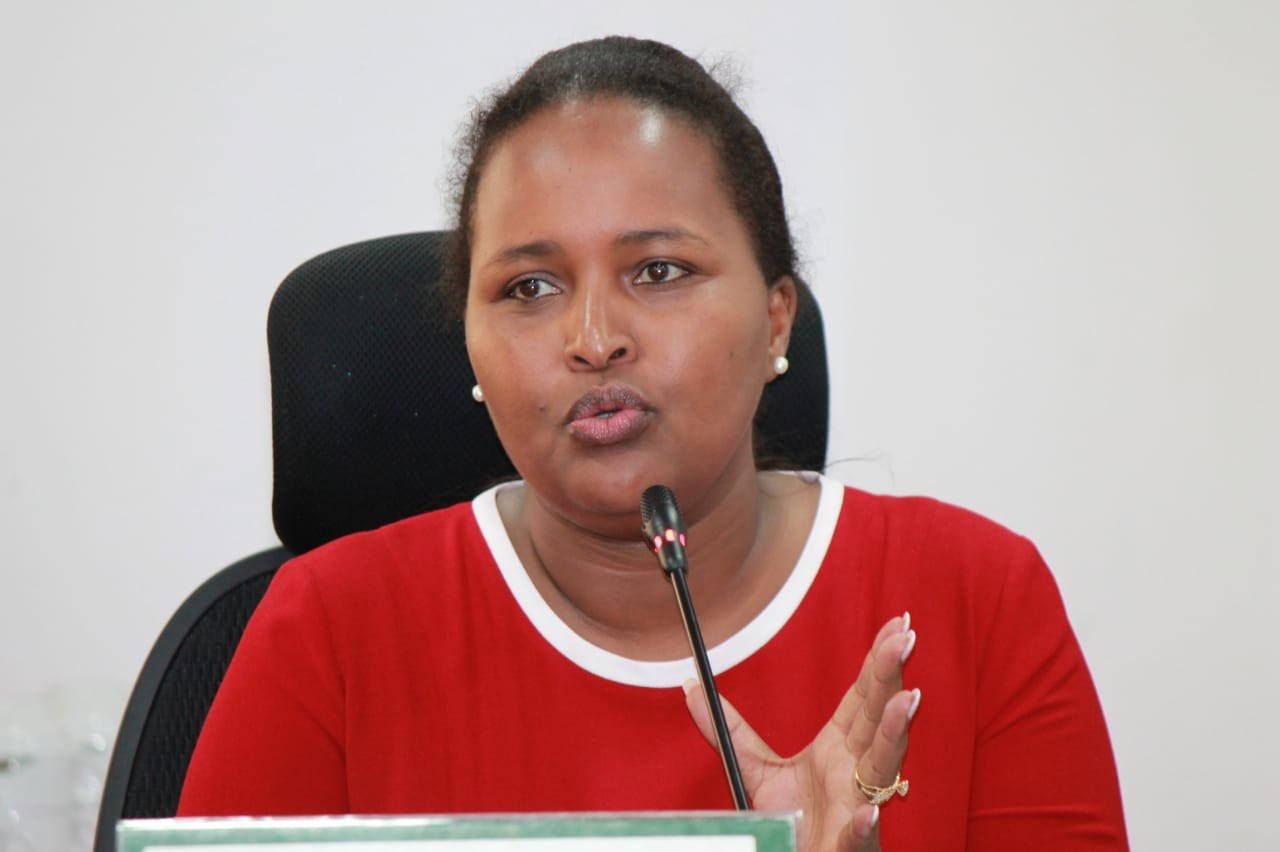The Mawingo Project, just like its offspring Adani, was "openly opaque" and shrouded in mystery. Agreed that the entity that handled it was a Special Purpose Vehicle doing business with Kenya Airways, its registration details remain a mystery to this very day. The same was the case with its clients from which it bought or "leased" planes. They had names like Tsavo, Amboseli, etc, names reminiscent of the tourism business in Kenya. But they were not registered in Kenya. They were registered in Cayman Islands, the Isle of Man, Gibraltar, etc. When we looked at the names of the owners of these entities, they were definitely foreigners who had nothing to do with Kenya: mystery bogymen created as real "special purpose vehicles" to fleece Kenya Airways of its hard earned wealth. Such are the ways of the corrupt of this world. The same is true of Adani. Who are the shareholders in Adani? What is Adani's image in India, its country of origin? Tell me the truth: why would Adani be prepared to do business with Kenya Airports Authority in an arrangement that cannot, truth be told, be sold to a Mama mboga in Gikomba?
Continuing on the path of similarities between the Mawingu Project and the Adani deal, we now look at KQs PIIP (in this third part) and Adani's PIP (in the final part of the series). Both proposals have the same intentions but the difference is that one is Kenyan demonstrating local capability and the other one is foreign steeped more in controversies than in ability to deliver. The preference for ADANI over KQ by the Kenyan government is perplexing, to say the least. When we look at KQs closest competitors, like Ethiopian Airlines, Rwanda Air and those from the Gulf region, they have total support from their own governments. The cost implications for KQ is that exposed this way, it will be difficult for them to survive let alone compete. But if given complete backing they will thrive. KQs lifeline was contained in their own proposal in 2018 which had Cabinet approval before it was submitted to KAA. What was KQs PIIP?
The Simba Project
A meeting on May 29, 2018, the Cabinet of the Government of Kenya considered a memorandum submitted jointly by the Cabinet Secretary for Transport, Infrastructure, Housing, Urban Development and Public Works and the CS for National Treasury and Planning aimed at consolidation of Kenya’s aviation assets. The meeting resolved to grant a policy approval for KQ and KAA to negotiate and agree on a framework to restore Nairobi as the civil aviation hub of choice in Africa. The meeting further directed the two CSs and the Attorney General to take action in preparing a substantive memorandum of the proposed framework.
The memorandum from the CS for Transport noted that KQ had over time been pushed out of the market by competitive airlines which were very strongly protected by their own Governments. An example cited was Ethiopian Airlines, which within nine years, had grown from half the size of KQ to three times the size of KQ. The CS further submitted that Kenya’s aviation model does not facilitate the growth of KQ and local airports, especially JKIA. From this evidence, there was need to find a solution that would establish KQ as one of the biggest African carriers and JKIA as a leading international aviation hub. As such KQ and JKIA should be treated as national assets with the proposed restructuring being viewed in geopolitical rather than financial terms.
In his submissions to the National Assembly Committee on Transport, Public Works and Housing of 2019 formed to inquire into the proposed KQ PIIP to KAA, Sebastian Mikosz, the then CEO for KQ, accompanied by KQ Board Chair Michael Joseph, stated that the next few years would determine which airlines would dominate the African skies. He noted that Kenya was the headquarters of a number of significant companies, had a liberalised market and a large number of premium leisure tourists. However, the conditions surrounding KQ and JKIA were alarming leading to a loss of market share to Ethiopian Airlines. Ethiopian Airlines had grown and at the time of the CEOs’ submissions, was flying to 153 destinations, had a fleet of 100 aircraft and 59 on order. KQ, on the other hand, had only 53 routes and a fleet of 40 aircraft with none on order. Significantly, the Kenyan aviation sector was facing a steady decline seen in the loss of performance by KQ as well as loss of business at JKIA to other competing hubs. The causes were narrowed down to the different mandates of Kenyan aviation and competition, liberalisation of the sector in Africa, aviation assets not being integrated and opposing interests between KQ and its base hub JKIA managed by KAA. In KQ’s view, the prognosis was grim. The tumour was spreading. If no positive changes were made to consolidate Kenya’s aviation assets, the Kenyan market would be consumed by foreign airlines. He would be proved right.
Under Mikosz's leadership KQ submitted its PIIP to KAA. In summary these were KQ’s proposals upon which the future of Kenya’s civil aviation hinged: (i) a concession to run JKIA for 30 years; (ii) annual concession fee at Sh2.9 billion in the beginning, projected to rise to Sh3.6 billion and peaking at Sh6.1 billion in 2033; (iii) KAA to retain liabilities including those arising from JKIA operations; (iv) KQ would operate, maintain, develop, construct, upgrade, modernise, finance, and manage JKIA; (v) improve airport operations without merging the two institutions; (vi) all buildings and land would still belong to KAA and hence the government, in a concession-operator agreement. Mikosz vision for KQ was simple; consolidate aviation assets similar to consolidation in countries like Ethiopia, Dubai, Qatar and Rwanda for success. Only South Africa, Kenya, and Mauritius had not taken this direction and their carriers were in trouble. Ironically, the only major difference in Adani's proposal with KQs is that one ‘I’ has been crossed out. Tragic.
KQ’s closest competitors
KQ's major competitors in the region are Ethiopian Airlines whose base airport is Bole International Airport in Addis Ababa; Qatar Airways operating from Hamad International Airport; Emirates Airlines in Dubai International Airport; and the first rising RwandAir whose home is Kigali International Airport. The governments in these countries (indeed many governments) believe that having their own ‘flag carrier’ is a matter of national pride. They also consider air transport to be essential for the functioning of the country and its economy and when passengers patronising an airline increase, the airline grows with more aircraft orders, the airport expands and so too does the economy. Simply put, airlines serve passengers and airports serve airlines.
Ethiopian Airlines, for instance, is owned by the Ethiopian Airlines Group, which also owns and operates Addis Ababa’s Bole International Airport, enabling them to earn additional revenues. By also running the airport, Ethiopian Airlines has outwitted the competition and is now the largest air carrier in Africa. The airline experienced double-digit growth in the decade ending 2020 and projects a similar growth trajectory in the years ahead. Bole International Airport will exceed its 25 million annual passenger capacity within the next five years ending 2028. In preparation, EAG is planning a new four-runway airport capable of serving 100 million passengers annually. Ethiopian Airlines has made profits year after year. The deal for the design and construction of the new airport was signed by Ethiopian Airlines.
RwandAir owned 100 per cent by the Rwandan government is preparing for significant growth and enhanced competitiveness after signing a major new partnership with Qatar Airways. Qatar Airways will acquire a 49 per cent stake in RwandAir, creating a strategic alliance that unlocks a range of benefits for the Rwandan airline. One of the most significant advantages for RwandAir is the potential for significant fleet growth in new, modern airplanes that are more efficient. This will enable the carrier to increase passenger capacity and reach new destinations, thus strengthening its position within the region.
Finally, Qatar Airways, formed after KQ, exemplifies the benchmark in the consolidation of aviation assets. Mikosz cited this airline as one that KQ needed to learn from. The airline was established in 1993 and re-launched in 1997. Today it is one of the Middle East's largest network airlines, operating an extensive network of international services. It is wholly owned by the Qatari Government operating as the Qatar Airways Group, the latter which enables the group to offer everything a traveler needs for a smooth journey including airport ground services, on board catering, private jet travel, and more.
The success of the above airlines is in recognising that given the competitive nature of the sector, especially in growing regions like Africa and Asia, strategies for remaining profitable lies in revenue management that captures the passengers’ needs from the time they make the decision to travel to when they arrive at their destinations. The more seamless and integrated these needs are the better for the passenger. The industry calls this “deployment of price bundling and inventory system in revenue management”. Ticket prices have thin margins for profits. But supporting on-ground services make huge profits and can improve an airline’s profits by as much as 15 per cent. Adani has targeted the most profitable sectors of the industry. KQ faces demise.
Responses to KQ's PIIP
On August 27, 2019, at the quarterly meeting of the Board of Directors of KQ, the decision was made to formally withdraw their PIIP from consideration by Public-Private Partnership Committee Committee of the National Treasury, KAA and any other institutions of Government which were involved in the process. Prior to this withdrawal, the Departmental Committee on Transport, Public Works and Housing of the National Assembly had collected views from Kenyans and institutions in the aviation sector and submitted a report to Parliament on June 17, 2019. The proposal was adopted by the National Assembly on July 23, 2019. The August House recommended the establishment of an aviation holding company to consolidate the country’s aviation assets including the nationalisation of KQ.
Despite these recommendations, KAA had already rejected the proposal in April 2019. The agency held that though JKIA was in need of new infrastructure, the proposal as structured disadvantaged it. The then KAA chairman and MD told MPs on the Transport Committee that they would present their preferred management model. The MD had no kind words for KQ, stating that it had no technical capacity to run JKIA, owing to its financial incapacities and lack of staff skilled in airport operations. In addition, the MD stated the plan would not give KAA value for money in the face of the Sh5 billion debt the concessionaire owed the authority then.
Other entities that rejected the proposal were the Public Investments Committee of the National Assembly and the Office of the Auditor General. PIC warned of massive losses should KQ take over JKIA for the next 30 years. In PIC’s argument, the country would lose Sh8 billion in revenue annually if it took control of JKIA. KQ’s loss-making reputation had injected fear in the PIC. The plan was dealt yet another blow when the Office of the Auditor General warned that if KQ took over the day-to-day operations at JKIA, the move would deprive KAA of a significant amount of revenue. However, the government in pronouncements by the Deputy President then defended the plan saying it would grow Kenya’s flower exports and enhance tourism inflows – largely carried by KQ. The DP reiterated that it was a win-win plan in realising KQ’s aspirations and reaping the benefits of a vibrant airport.
These are the questions that need to be answered in the Adani proposal. Was it presented to the National Cabinet for approval like the KQ proposal? Was it subjected to scrutiny by parliamentary committees like the KQ proposal? Has the current Auditor General’s Office analysed the viability of the deal as it did for KQ? Has the Attorney General done due diligence on who owns Adani and its track record globally? We subjected our own KQ to this depth of scrutiny, why not Adani?


